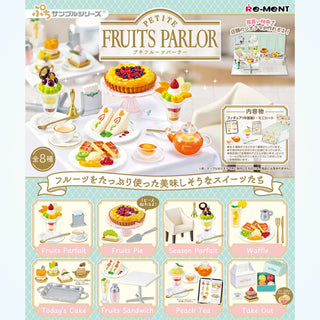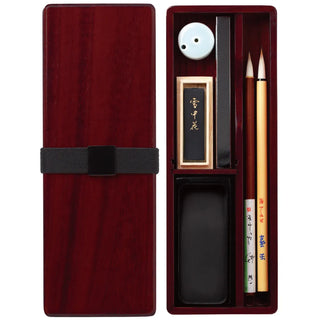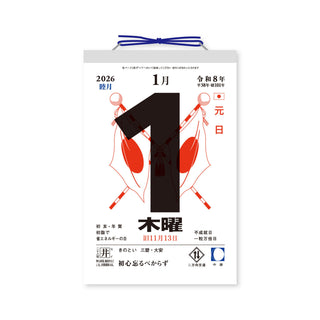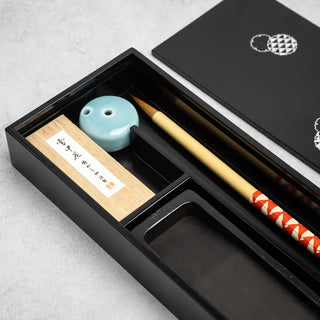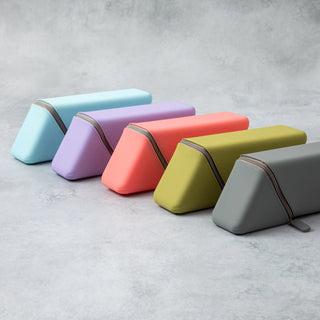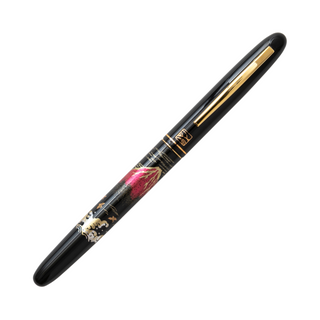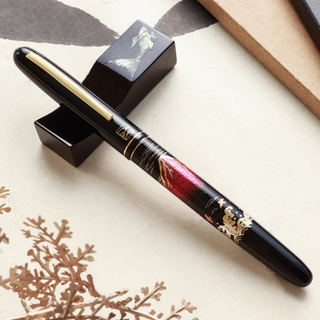
World Stationery Day is a time for stationery lovers everywhere to come together and celebrate their love and appreciation for their favorite writing tools and creative supplies.
Do you remember the magic of new stationery? The thrill of back-to-school season? That feeling when you finally got your hands on a new mechanical pencil or the marker set you had been dreaming about? Or the excitement of showing off a brand-new pencil case to your friends, proud of its clever features?
What if we told you that 🪄magic🪄 never disappeared—you just forgot?
What if we told you that you can feel that same ✨spark of joy✨ again?
In today’s digital age, where writing by hand has become almost unconventional, World Stationery Day invites us to slow down and reconnect with the simple pleasure of pen and paper. Let’s celebrate the art of writing, creativity, and the timeless charm of traditional stationery.
When is World Stationery Day?
This year, it falls on Wednesday, April 30, 2025 — the last Wednesday of April. Mark your calendars and get ready to celebrate with us!
From Poster Boards and Colorful Markers to Laptops and Tablets
In this digital age, it has become increasingly common for paper to be replaced by software, and for notebooks to be swapped out for laptops or tablets. People from all walks of life and every age group are gradually working to digitize their lives, especially when it comes to documenting, recording, and even processing information. Activities that were once done almost exclusively on paper, like brainstorming, journaling, note-taking, and even preparing presentations, are now carried out digitally on mobile devices.
Not long ago, making a presentation in school meant pulling out poster boards, colorful markers, scissors, glue, and sprawling across the classroom floor with your teammates. Now, the same task can be completed conveniently with just a single handheld device.
While the convenience is undeniable, as a stationery brand, we can't help but feel that something essential is lost in the transition from poster boards and colorful markers to laptops and tablets. So we did a little digging in search of answers.
Recent and often quoted scientific research related to this topic was done by F. R. (Ruud) Van der Weel and Audrey L. H. Van der Meer from the Norwegian University of Science and Technology has explored how writing by hand leads to greater brain connectivity, with important implications for classroom learning. Their findings suggest that handwriting engages more complex finger motor skills and control compared to typing, which involves more mechanical and repetitive motions. Because handwriting demands that students pay closer attention to the task at hand, it stimulates the brain more intensely. As a result, this heightened engagement fosters the development of more complex neural network connections, enhancing the learning process.
You can learn more about this research here.
Scientific reasoning aside, there are also a lot of reasons why you should not forgo analog stationery products and replace all of them with digital items. Here are some of the reasons why:
-
Slowing Down
Unlike typing on a keyboard, where words can be produced almost mindlessly at high speed, writing each letter by hand demands a deliberate, thoughtful pace. You become more aware of every curve, line, and movement, naturally encouraging you to be more present with your thoughts. Even simple actions like switching from one colored pencil to another create small, intentional pauses that reconnect you with the moment. These moments of tactile engagement help shift your mind away from the rush of digital multitasking and into a slower, more reflective rhythm. Using analog stationery becomes not just a creative act but a mindful practice, allowing you to savor the process, find joy in small details, and cultivate deeper focus and calmness in your daily life.
 This deliberate and mindful practice can also be incredibly helpful in the learning process. When you write by hand, you are forced to slow down, which encourages you to be fully present in the moment. Unlike the speed and ease of typing, handwriting brings with it an inherent discomfort — the occasional struggle with forming letters or the need to pause and think more carefully about what you are writing. These small “bumps” are part of the learning journey. They serve as opportunities to recognize your weaknesses and areas where improvement is needed. Embracing this discomfort and pushing through it, rather than rushing past it, allows you to confront challenges head-on. Over time, this mindful approach helps you internalize lessons more deeply, fostering greater resilience, understanding, and progress in your learning. The slow, thoughtful pace of analog writing encourages a deeper connection with the material, leading to more meaningful and lasting growth.
This deliberate and mindful practice can also be incredibly helpful in the learning process. When you write by hand, you are forced to slow down, which encourages you to be fully present in the moment. Unlike the speed and ease of typing, handwriting brings with it an inherent discomfort — the occasional struggle with forming letters or the need to pause and think more carefully about what you are writing. These small “bumps” are part of the learning journey. They serve as opportunities to recognize your weaknesses and areas where improvement is needed. Embracing this discomfort and pushing through it, rather than rushing past it, allows you to confront challenges head-on. Over time, this mindful approach helps you internalize lessons more deeply, fostering greater resilience, understanding, and progress in your learning. The slow, thoughtful pace of analog writing encourages a deeper connection with the material, leading to more meaningful and lasting growth.
-
Making Room For Imperfection
Digital writing tools, such as GoodNotes, or art applications like Procreate, are undeniably powerful additions to humanity's creative toolkit. They offer unmatched convenience and the ability to explore an expansive range of possibilities, allowing creators to push the boundaries of art and expression. However, one aspect of digital creation that sets it apart from analog methods is the ability to erase mistakes without leaving a trace. Whether it’s a digital document, a graphic editor, or a drawing app, any error can be easily undone, leaving no remnants behind.
 But for those of us who grew up in the era of pencil and paper, there’s a unique sense of nostalgia that comes with the imperfections of analog tools. The faint dents left behind on notebook pages, even after erasing a sentence; the visible marks of correction tape, no matter how perfectly it matches the paper color; or the little doodle of a flower or design you might add to cover up an accidental paint splatter on a poster — these imperfections are all part of the analog experience.
But for those of us who grew up in the era of pencil and paper, there’s a unique sense of nostalgia that comes with the imperfections of analog tools. The faint dents left behind on notebook pages, even after erasing a sentence; the visible marks of correction tape, no matter how perfectly it matches the paper color; or the little doodle of a flower or design you might add to cover up an accidental paint splatter on a poster — these imperfections are all part of the analog experience.
In the world of analog stationery, imperfection has its place. Often, these small mistakes-the ones we can’t so easily erase or undo—become part of the charm and character of the work. They add authenticity, personality, and, most importantly, a sense of humanity to the creation. These “flaws” enhance the overall experience and often turn out to be some of the most memorable moments of the creative process. While digital tools have their unique advantages, they miss this key human element. The spontaneity, the occasional struggle, and the beauty of imperfection — all of which are central to the analog experience — cannot be fully replicated by digital means.
-
Imprints of Time
Have you ever stumbled across a piece of art or an old test paper from your school days? Perhaps it’s crumpled, the edges worn and dog-eared, or maybe it’s been folded so many times that it’s almost unrecognizable. The colors may have faded, and pencil marks may appear faint, rubbed off from years of handling. The true beauty of using physical stationery doesn’t lie solely in the act of creation, but in how it ages and evolves with you.
Each page, every doodle, and each scribbled note is like a snapshot of the time and emotion in which it was created. As you revisit journals from different stages of your life, you can see how various events, dates, and moods affected the pages. Some days were lighthearted, with time to doodle and let your thoughts flow freely, while other days might carry more weight, reflected in the deeper impressions of your pen as you pressed harder, unknowingly marking the pages to come. These little details, these imperfections, infuse your work with memories. As the pages turn yellow over time (if you do not use acid-free paper notebooks), they carry not just the content written on them but also the essence of those moments. And when you look back, you’re reminded not only of the memories but of the time that has passed, a reminder that these moments are behind you. This is the magic of analog stationery — it marks time in a way digital tools cannot. If you had stored your thoughts on a tablet instead of a physical notebook, years from now, you might find your notes just as clear and pristine as the day you first wrote them. But you wouldn’t be able to experience the same nostalgia and connection to the past because modern technology simply doesn’t age the same way.
Analog Habits to Incorporate
We understand that even if you believe in the benefits of using analog stationery, it can sometimes feel overwhelming to figure out how to incorporate it into your daily life. With so many types of stationery out there—and new ones constantly popping up—it can sometimes feel like more fuss than it’s worth. That’s why we want to share some simple, thoughtful ways you can seamlessly weave analog stationery into your routine and truly enjoy the benefits it offers.
-
Using a physical planner
Switching from a digital planner to a physical one is a simple yet powerful way to bring more analog systems into your daily life. Unlike digital planners that come with constant notifications and distractions, a physical planner offers a quiet, open space for you to jot down, annotate, and create freely. Writing things down by hand is also known to boost memory retention, helping you better remember your plans and goals. And when you complete a task, there's something incredibly satisfying about crossing it off your list—a small but meaningful moment of accomplishment.
If you decide to make the switch to a physical planner, we highly recommend checking out our Decorative Tape and Sticker Collection. From charming washi tapes to vibrant stickers and decorative tapes, we offer a wide variety of options to help you personalize your planner and make it truly your own. To keep you organized, you can pair your planner with a Uni Jetstream Three Ink Ballpoint Pen or the beautiful Uni Jetstream x Karimoku 4&1; the different ink colors allow you to color-code your schedule accordingly.
For those of you with artistic souls who love to doodle in your planners, we highly recommend the beloved Zebra Clickart Marker Set. With a wide selection of vibrant colors, these markers will not only brighten up your planner but also make a fantastic addition to your color-coding system. They're perfect for adding a creative touch to your daily organization.
-
Brain dumping on paper.
I’m sure many of you can relate to that overwhelming feeling when your to-do list is overflowing and your mind is buzzing with a thousand things, each one demanding your attention louder than the last. You know you have so much to do, but you’re at your wits' end. What do you do in a moment like this? The answer: a brain dump.
If you’re unfamiliar with brain dumping, don't worry—it couldn’t be simpler. All it means is taking everything swirling around in your head and getting it down onto paper. If you’re a Harry Potter fan like me, think of your notebook as your very own Pensieve—the magical device Dumbledore used to store and review his memories. To create your own Pensieve, all you need is a notebook, a sheet of paper, or even a blank page in your planner.
 Start by setting aside 5–10 minutes and just write down everything that’s cluttering your mind. To-do lists, random reminders, a quote from a book you want to remember, meetings you need to attend—everything goes. Don’t worry about organizing it or making it look neat; just dump it all out. Once your mind starts to quiet down, you can stop and take a look at what you’ve captured. From there, you can sort the information into categories, prioritize tasks, or move them into your usual planning system.
Start by setting aside 5–10 minutes and just write down everything that’s cluttering your mind. To-do lists, random reminders, a quote from a book you want to remember, meetings you need to attend—everything goes. Don’t worry about organizing it or making it look neat; just dump it all out. Once your mind starts to quiet down, you can stop and take a look at what you’ve captured. From there, you can sort the information into categories, prioritize tasks, or move them into your usual planning system.
Brain dumping is incredibly powerful—it helps reduce stress, sharpen focus, free up mental space for creative thinking, and overall, leaves you feeling lighter and more productive.
If you’re looking for the perfect tool to support your brain-dumping sessions, we highly recommend the Noble Note Notebook in B5 Grid. It comes with 100 sheets, giving you plenty of space for multiple sessions. The B5 size is just right: big enough to capture all your thoughts without overwhelming you, and compact enough to carry around wherever you go. Plus, the grid format keeps your writing organized without feeling restrictive.
If you’re looking for alternatives, we also suggest the Tsubame Fools University B5 - W100S - Ruled, or the Square Note 140 x 140mm - Graph. Both are excellent choices, depending on your preference for lined or grid layouts.
-
Replace your phone with a notebook.
There are a great number of videos on YouTube or articles online sharing the story of the creator/author replacing their phone with a notebook instead of carrying around a pocket notebook with them everywhere they go. Essentially, the idea is to provide yourself with an analog and alternative outlet to the doom scrolling on your phone, which has unfortunately become a default for a lot of people. Doom scrolling has been linked to a lot of unfortunate results, such as la ack of productivity, this generation's short attention span, the inability to delay instant gratification, and more. So, replacing your phone with a notebook might not be a bad experiment to try and see what kind of benefits you will experience in your day-to-day life.
 For quick brain dumps or notes on the go, we recommend our smaller-sized options like the Noble Memo Notepad - B7 or the Tsubame Fool’s Cream B7 Memo Notepad. Both are perfectly pocket-sized and come in a variety of paper styles, so you can choose the one that best suits your writing style and preferences. To complete your setup, we suggest pairing it with the Tombow AirPress Pen. This ballpoint pen features a unique technology that uses compressed air to push out the ink, allowing it to write smoothly even on damp paper, at odd angles, or even upside down. It’s a reliable companion to have with you whenever inspiration strikes.
For quick brain dumps or notes on the go, we recommend our smaller-sized options like the Noble Memo Notepad - B7 or the Tsubame Fool’s Cream B7 Memo Notepad. Both are perfectly pocket-sized and come in a variety of paper styles, so you can choose the one that best suits your writing style and preferences. To complete your setup, we suggest pairing it with the Tombow AirPress Pen. This ballpoint pen features a unique technology that uses compressed air to push out the ink, allowing it to write smoothly even on damp paper, at odd angles, or even upside down. It’s a reliable companion to have with you whenever inspiration strikes.
Reignite the magic this World Stationery Day
Have we convinced you to add more analog stationery to your life? World Stationery Day reminds us that the simple joy of writing by hand, creating with traditional tools, and embracing imperfection is something worth holding onto. In a world that moves faster than ever, analog stationery offers us a chance to slow down, reconnect with our thoughts, and leave a lasting imprint of our moments in a way digital tools never can.
So this World Stationery Day, we invite you to rediscover that childhood magic—the excitement of fresh notebooks, colorful pens, and the limitless possibilities they represent. Celebrate with us by picking up your favorite stationery, putting pen to paper, and letting your imagination flow. Here’s to honoring the art of writing, creating, and being fully present.





